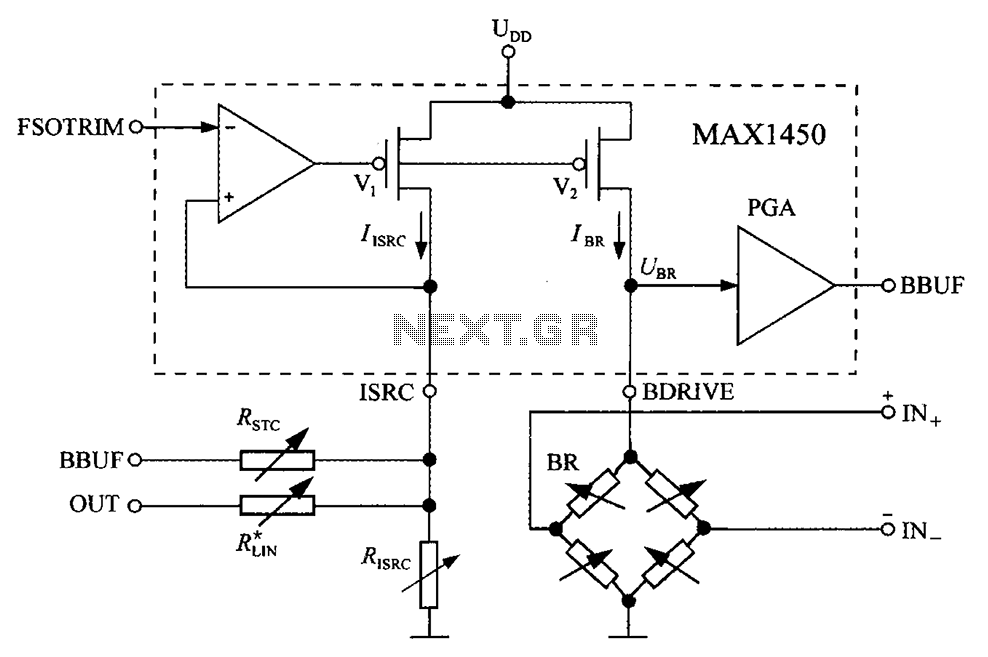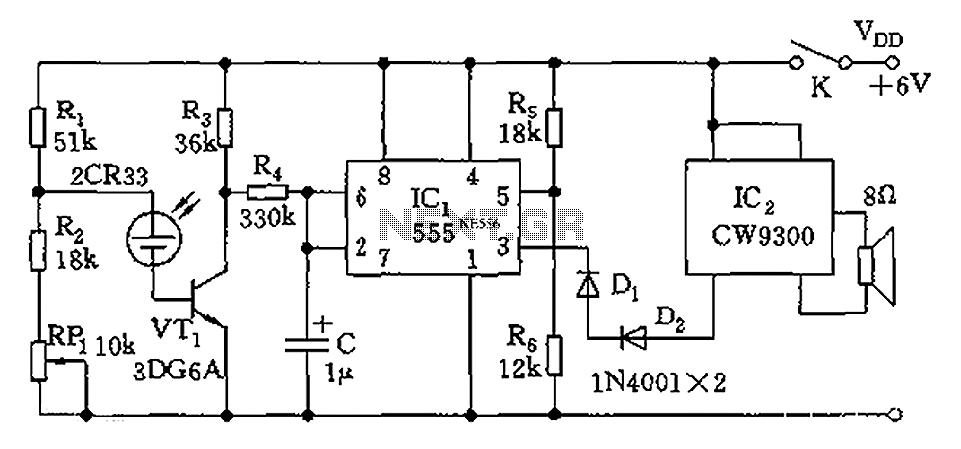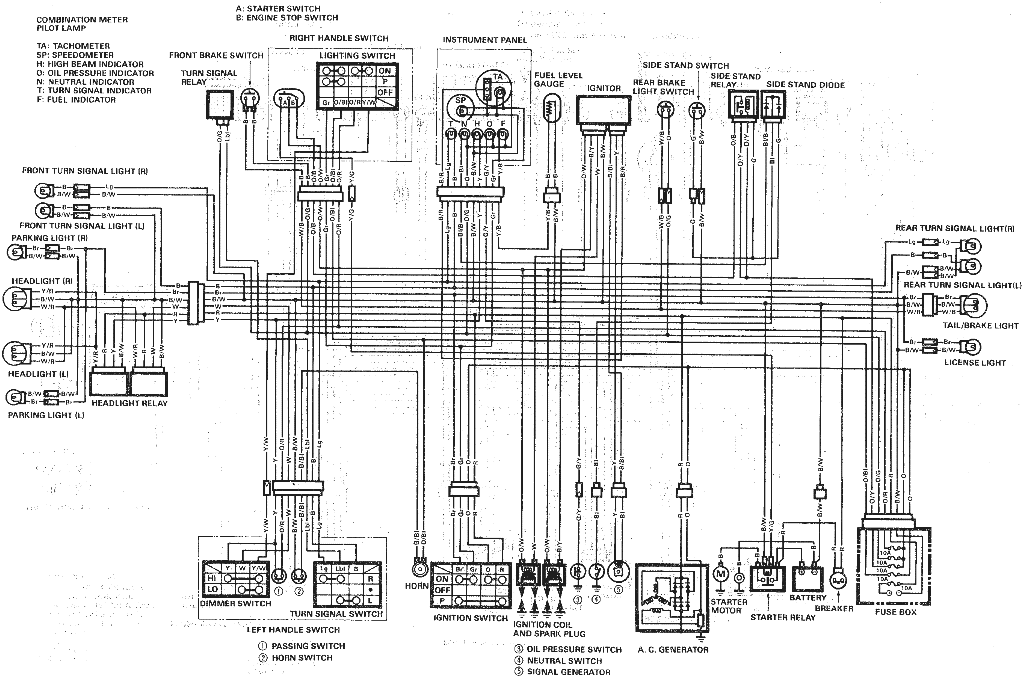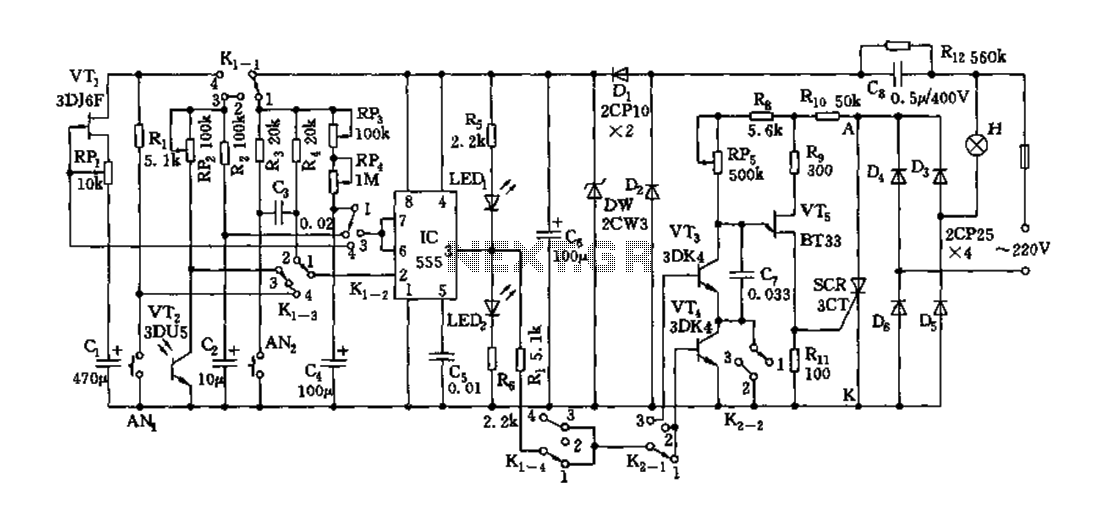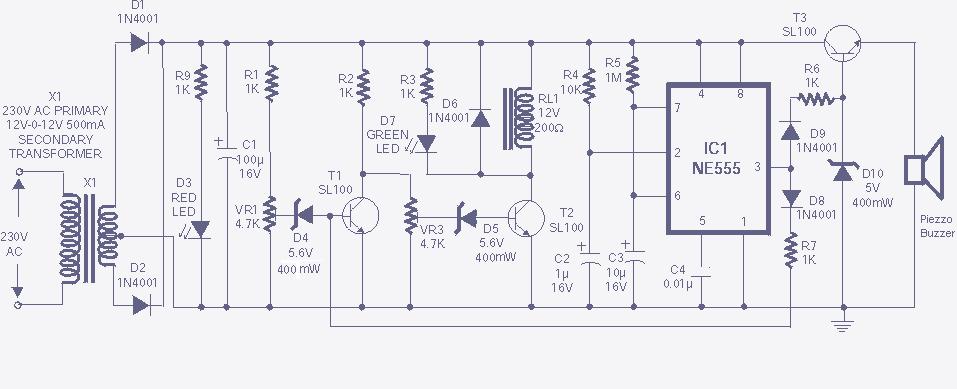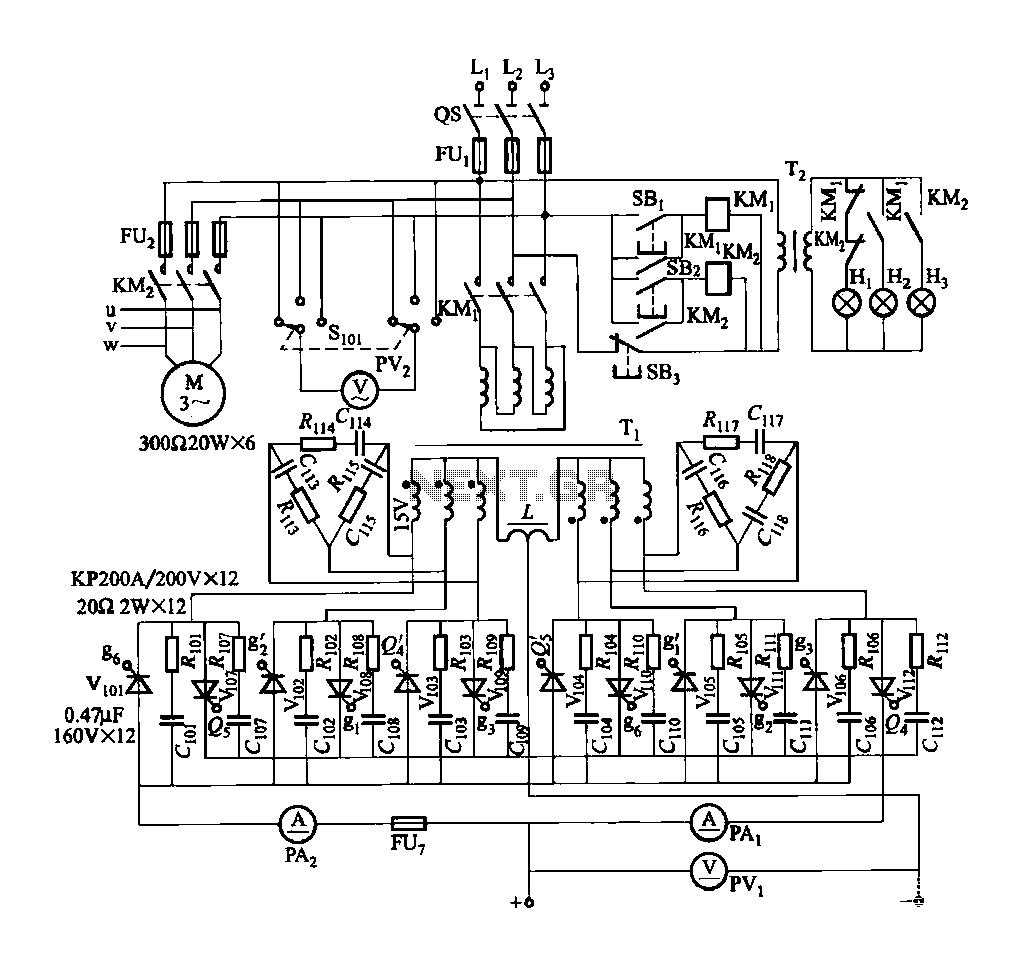
Trunk main wiring system diagram a formula
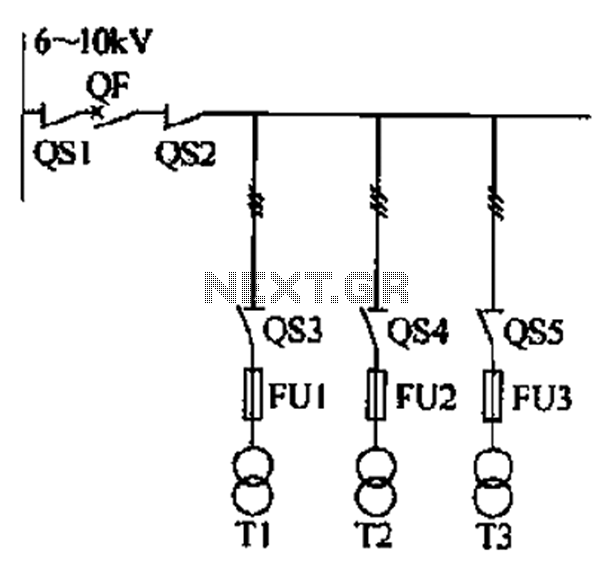
A 6-kV bus segment at the circuit breaker should be installed, but under certain circumstances, it may be equipped with an isolating switch, load switch, or isolating contact head group. These circumstances include: 1) when manual switching of the power supply is required due to an accident; 2) when operation without a load is not necessary; 3) when there is no protection or automatic device; and 4) when there are fewer outgoing circuits. The substation transformer power switch should be installed decisively as a means to control supply, and it should be equipped with protective devices. In a radial power supply configuration, an isolating switch or load switch should be installed. If the transformer high-voltage power distribution room is adjacent, a switch may be installed. When employing a low self tie breaker, the following requirements must be met: it should be installed for automatic recovery, self-resetting, and must include a three-position selector switch. The low-voltage tie breaker should have a cast delay of 0 to 1 second. In the event of a failure of the low-voltage main circuit breaker, automatic access through the tie breaker is not permitted. The low-voltage side of the main circuit breaker and the electric interlock tie breaker should not operate concurrently with the network. When an emergency power supply (such as a diesel generator) is connected to the substation low-voltage distribution systems, a power supply interconnection should be established between the external network, which should not operate simultaneously to prevent confusion with external power billing. The wiring should provide sufficient flexibility to ensure that critical loads receive power during non-accident conditions.
The installation of a 6-kV bus segment at the circuit breaker is critical for ensuring reliable power distribution within a substation. The decision to incorporate isolating switches, load switches, or isolating contact head groups is contingent upon specific operational scenarios. For instance, manual intervention may become necessary in the event of an accident, necessitating the ability to switch power supplies manually. Additionally, scenarios where load operation is not required or where protection and automatic devices are absent must also be considered when determining the configuration of the bus segment.
The transformer power switch within the substation must be installed with precision, as it plays a vital role in managing the electrical supply. This switch should be complemented by protective devices to ensure safety and reliability. In radial power supply systems, the inclusion of isolating or load switches is essential to facilitate safe maintenance and operation.
In configurations where the transformer high-voltage power distribution room is in close proximity, the installation of a switch may further enhance operational flexibility. The low self tie breaker must adhere to specific operational criteria, including automatic recovery capabilities and the presence of a three-position selector switch, which allows for optimized control of the circuit.
The low-voltage tie breaker should be designed with a cast delay feature, providing a delay of 0 to 1 second to prevent unwanted tripping during transient conditions. Furthermore, in the event of a failure of the low-voltage main circuit breaker, it is imperative that automatic access through the tie breaker is disabled to maintain system integrity.
The interaction between the low-voltage side of the main circuit breaker and the electric interlock tie breaker must be carefully managed to prevent concurrent operation with the network, which could lead to operational conflicts. Additionally, when integrating an emergency power supply, such as a diesel generator, into the low-voltage distribution systems, it is crucial to establish a clear interconnection with the external network. This interconnection must be designed to prevent simultaneous operation, thereby avoiding confusion in power billing and ensuring that critical loads receive uninterrupted power in non-accident scenarios. The wiring configuration should be flexible enough to accommodate the varying needs of important loads while maintaining system stability.6-lOkV bus segment at the circuit breaker should be installed, but when any of the following circumstances, can be equipped with isolating switch or load switch or isolating co ntact head group. 1) when the accident manual switching power supply to meet the requirements; 2) do not need to operate with a load; 3) protection or automatic device No I 4) less outgoing circuit. Substation transformer power switch installed irresolute: as a way to stem Sh supply, shown in Figure 15-8, should be installed with a protective Kaimei set equipment.
In radial power supply should be installed isolating switch or load switch. When the transformer high-voltage power distribution room adjacent paste, may be installed switch. When the low self tie breaker vote manner, shall meet the following requirements: should be installed in automatic recovery, self pitcher Fu, since the vote out three position selector switch status. Low-voltage tie breaker from the cast delay O ~ ls. When the low-voltage main circuit breaker failure guillotine opening, does not allow automatic access through the tie breaker.
The low pressure side of the main circuit breaker and electric interlock tie breaker should not be and network operation. When the emergency power supply (eg diesel generator) access substation low-voltage distribution systems, and power supply should be set between the external network interconnection, network and may not run.
To avoid confusion with the outer A power billing. On the wiring to have a certain. Flexibility to ensure that give some important load power in the non-accident.
The installation of a 6-kV bus segment at the circuit breaker is critical for ensuring reliable power distribution within a substation. The decision to incorporate isolating switches, load switches, or isolating contact head groups is contingent upon specific operational scenarios. For instance, manual intervention may become necessary in the event of an accident, necessitating the ability to switch power supplies manually. Additionally, scenarios where load operation is not required or where protection and automatic devices are absent must also be considered when determining the configuration of the bus segment.
The transformer power switch within the substation must be installed with precision, as it plays a vital role in managing the electrical supply. This switch should be complemented by protective devices to ensure safety and reliability. In radial power supply systems, the inclusion of isolating or load switches is essential to facilitate safe maintenance and operation.
In configurations where the transformer high-voltage power distribution room is in close proximity, the installation of a switch may further enhance operational flexibility. The low self tie breaker must adhere to specific operational criteria, including automatic recovery capabilities and the presence of a three-position selector switch, which allows for optimized control of the circuit.
The low-voltage tie breaker should be designed with a cast delay feature, providing a delay of 0 to 1 second to prevent unwanted tripping during transient conditions. Furthermore, in the event of a failure of the low-voltage main circuit breaker, it is imperative that automatic access through the tie breaker is disabled to maintain system integrity.
The interaction between the low-voltage side of the main circuit breaker and the electric interlock tie breaker must be carefully managed to prevent concurrent operation with the network, which could lead to operational conflicts. Additionally, when integrating an emergency power supply, such as a diesel generator, into the low-voltage distribution systems, it is crucial to establish a clear interconnection with the external network. This interconnection must be designed to prevent simultaneous operation, thereby avoiding confusion in power billing and ensuring that critical loads receive uninterrupted power in non-accident scenarios. The wiring configuration should be flexible enough to accommodate the varying needs of important loads while maintaining system stability.6-lOkV bus segment at the circuit breaker should be installed, but when any of the following circumstances, can be equipped with isolating switch or load switch or isolating co ntact head group. 1) when the accident manual switching power supply to meet the requirements; 2) do not need to operate with a load; 3) protection or automatic device No I 4) less outgoing circuit. Substation transformer power switch installed irresolute: as a way to stem Sh supply, shown in Figure 15-8, should be installed with a protective Kaimei set equipment.
In radial power supply should be installed isolating switch or load switch. When the transformer high-voltage power distribution room adjacent paste, may be installed switch. When the low self tie breaker vote manner, shall meet the following requirements: should be installed in automatic recovery, self pitcher Fu, since the vote out three position selector switch status. Low-voltage tie breaker from the cast delay O ~ ls. When the low-voltage main circuit breaker failure guillotine opening, does not allow automatic access through the tie breaker.
The low pressure side of the main circuit breaker and electric interlock tie breaker should not be and network operation. When the emergency power supply (eg diesel generator) access substation low-voltage distribution systems, and power supply should be set between the external network interconnection, network and may not run.
To avoid confusion with the outer A power billing. On the wiring to have a certain. Flexibility to ensure that give some important load power in the non-accident.
